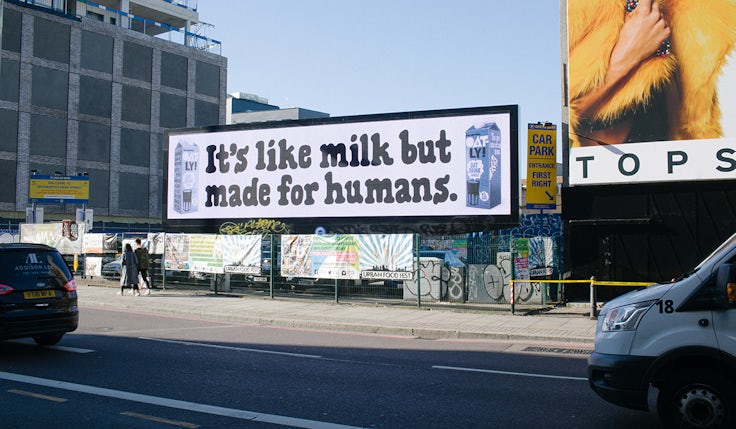Is your marketing plan a rabbit or a duck?
Marketers should borrow from the ‘duck-rabbit illusion’ when thinking about what their marketing plan is trying to achieve to ensure direct marketing activity isn’t compromised by an injection of emotion and brand-building campaigns aren’t undermined by focusing on product.
 The bluebells are out, snowdrops spraying forth, the weather a mercurial mix of sunshine and showers. It is spring and that means the time for restructuring.
The bluebells are out, snowdrops spraying forth, the weather a mercurial mix of sunshine and showers. It is spring and that means the time for restructuring.
In many organisations restructuring is a surprisingly common occurrence. A bi-annual convulsion to control costs. But post-Covid, this feels like co-ordinated action as most companies struggle to find sufficient growth to move their share prices up sustainably. Perhaps this is part of Boris’s Brexit dividend? A legacy of domestic underinvestment in our businesses and a persistent unpopularity in UK stocks. Either way, we are in a ‘do more for less’ environment. The big accountancy firms and consultants are surely salivating.
How should marketers insulate themselves from the cost-cutting drive? In my experience, that’s the wrong question.
Not every brand can afford to invest in brand building and direct response marketing in one go. It is a choice.
Frankly, it’s too late to worry about that now. The die will be cast, and we each need to do our best. Looking ahead, the best way to protect brand building and marketing budgets starts years before restructuring is even a glimmer in the melancholic eye of your CFO.
It all comes down to being clear on business outcomes and the role of the brand to support delivery of them. So, thinking past the springtime gloom of 2024, what should marketers do now to make sure they protect what’s precious going forward?
Can you tell your rabbits from your ducks?
Recently, I was listening to a podcast series of lectures from the queen of Shakespearean scholarship at Oxford University, Professor Emma Smith. In analysing the themes held within Henry V, Professor Smith sets out a hypothesis using an ornithological analogy that in many ways relates to marketers and marketing.
If she had been talking about marketing, she would have asked if our marketing plan is a rabbit or a duck? The point being that at its heart, what it shouldn’t be is a dabbit or a ruck, which, as with some interpretations of Henry V, many marketers fall into the pragmatist’s trap of trying to be both things at the same time.

What am I talking about? (Bear with me, this will make sense in a minute.) There is a famous experiment in psychology where people are presented with a line drawing. On inspection, you can either see this drawing as a rabbit or a duck. It is either one or the other. What we don’t see is something that is mostly rabbit, but with say a beak. Or mostly duck, but with floppy ears. No. It is more binary: rabbit or duck.
In Henry V he is either admirable or deplorable. He is not and cannot be both. And to this extent, the question we should ask ourselves in marketing is whether our plans and campaigns are either long-term brand-building or short-term direct marketing in intent. Are they, as the sages of effectiveness Binet and Field might say, the long and the short of it?
What Professor Smith argues in literary criticism, and I am borrowing for marketing strategy, is that they shouldn’t be ‘the middle of it’.
Les Binet and Peter Field on 10 years of The Long and the Short of It
Do you have a dabbit strategy?
Time and again marketers fall into a fatal compromise and opt for the dabbit strategy. This is a strategy where direct marketing activity is compromised in effectiveness by adding in non-responsive elements like emotional connection and being overtly purpose-led at the expense of a rational call to action. And where brand-building campaigns are fatally undermined by being all about products, features and attributes, at the expense of a higher order emotionally resonant and memorable story.
Of course, for those lucky enough to be able to afford it, having both a rabbit and a duck is amazing – positively agricultural and bucolic. But for those who can’t run both styles of campaign simultaneously, held together with distinctively branded assets, I am afraid the answer has to be do one or the other, and stay well away from any mutant rucks. Not every brand can afford to invest in brand building and direct response marketing in one go. It is a choice.
Time and again marketers fall into a fatal compromise and opt for the dabbit strategy.
In fact, it is precisely by leveraging this understanding that marketers can insulate their functions when the inevitable and cyclical round of cost-cutting arrives. The rabbit/duck analogy is a forcing mechanism that sits at the heart of marketing in a commercial enterprise. It can be used as a device to help marketers work out what their function is for, and what the role of marketing and brand is in their organisation. It can help focus minds on what needs to be invested in, especially in a world of finite resources and hard choices. Are we building a brand for tomorrow that gives us pricing power, greater share of market, more loyal customers who spend more with us? Or, are we selling to monthly, quarterly and annual targets – rowing the boat faster – optimising, tweaking and continually improving efficiency and effectiveness to deliver revenues now?
For the vast majority of marketers, to ensure their departments survive future Saint Crispin’s Days, they need to be the latter. They need to be a duck. Be a proud duck. They need to stop dreaming of being a rabbit, because most rabbits really don’t like swimming.






